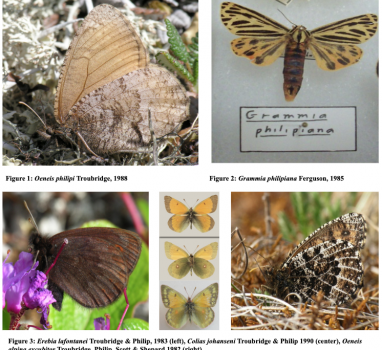Poster by Kathryn M. Daly & Derek S. Sikes University of Alaska Museum. 907 Yukon Drive, Fairbanks, Alaska 99709. View PDF version.
Alaska’s Lepidopterist
Dr. Kenelm Winslow Philip was born 6 November, 1931 in Staten Island, NY and lived to be 82 years old. He died on March 14, 2014 in Fairbanks, Alaska, where he had spent almost 5 decades documenting Alaska’s butterfly and moth species. Dr. Philip founded the Alaska Lepidoptera Survey, a network of over 600 volunteers who helped him to collect specimens. Through the combined efforts of Dr. Philip and his volunteers, specimen numbers grew to be the largest private collection of Beringian Lepidoptera in the world with over 111,8000 specimens from Alaska, Canada and Russia. His scientific legacy has been honored through two patronyms (Figures 1, 2). His passion for this mission brought him to remote lands across the Beringian region, where he (and his volunteers) found Lepidoptera species new to Alaska and several new to science, which he and collaborators described (Figure 3).
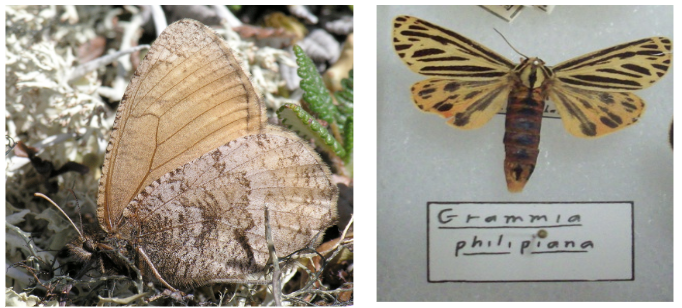
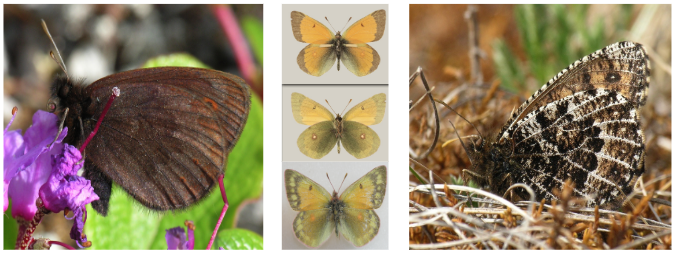
Butterflies & Astronomy
Dr. Philip attributed an early love of butterflies to summers spent at Camp Treetops in the Adirondack Mountains, where he began collecting at the age of 6. He became a member of the Lepidopterist’s Society in 1956 and continued to chase this passion while formally devoting his education to physics and astronomy. He obtained his BS, MS, and PhD from Yale University. He became a staff astronomer at the Yale University Observatory. While still a student, he met the love of his life, Betty Anne, whom he married in 1957. Aside from astronomy, he pursued research on the Mandlebrot equation of fractals (Figure 4). His research on solar radio bursts, decameter observations of Jupiter, and acoustic sounding of the lower atmosphere offered him the opportunity to move to Fairbanks, Alaska in the fall of 1965.

1965 – Arrival to Alaska
Dr. Philip was offered a position teaching physics at the Geophysical Institute, based at the University of Alaska Fairbanks (UAF). He and Betty Anne (who was also hired at UAF to teach chemistry) arrived in fall; by the summer of 1966 he began enthusiastically collecting. His passion for Lepidoptera was already well established though active participation in the Lepidopterists’ Society. He began as the Associate Editor of the Journal of the Lepidopterists’ Society in 1966, a position he held throughout his life. In 1967 he was elected Vice President of the Lepidoptera Society. He served in this role from 1967-1972, and again from 1977-1978. He was elected to the Executive Council from 1974-1977, and wrote the Far North Season Summary (including annual species lists documented in both AK and western Canada) through his last field collecting season of 2013.
In Alaska, he quickly became affiliated with the Institute of Arctic Biology and the University of Alaska Museum while sharing his growing species lists from each summer with the Lepidopterists’ Society. As the last frontier for North America, much of Alaska had never been sampled for Lepidoptera prior to his arrival. The Smithsonian Institution offered encouragement and the materials necessary to build his collection. This inspired him to formally create the Alaska Lepidoptera Survey which was unveiled to the public officially in 1970.
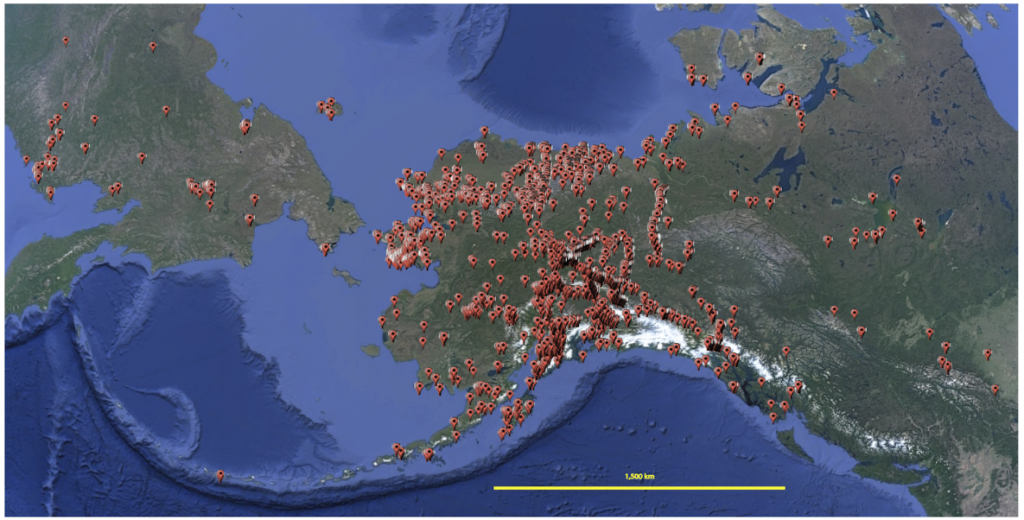
This map does not yet reflect every specimen within the collection; the effort to create records is ongoing at the University of Alaska Museum.
Alaska Lepidoptera Survey
In 1970, Dr. Philip unveiled the Alaska Lepidoptera Survey, which would become the largest and longest running citizen science project in Alaska’s history. Based out of his private laboratory in Fairbanks, Dr. Philip mailed collecting kits along with a collapsible net and instructions to over 600 volunteers who promised to collect and send him specimens. The kits included ‘Station Sheets’, a template form to document the habitat in any locality where specimens were collected. Dr. Philip solicited help through the radio, public speeches and newspaper articles that ran statewide (Figure 5). Funding and logistical support for the Alaska Lepidoptera Survey was obtained through the Smithsonian, University of Alaska Fairbanks, National Park Service, National Geographic Society, Alaska Department of Fish and Game and the Alaska Department of Transportation (Figure 6).
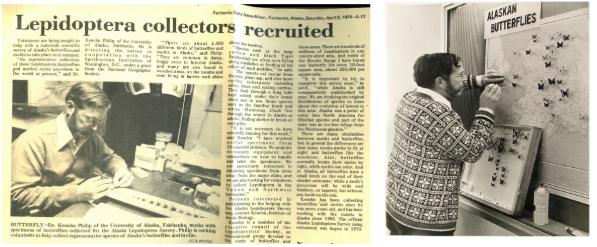
Beringian Focus
Through funding from the Canadian Polar Shelf Project, Dr. Philip was able to travel outside of Alaska to remote areas in western Canada. He traveled to eastern Russia for collecting trips in the late 1970’s & early 1980’s through logistic support provided by the U.S. National Science Foundation, under their Soviet Exchange Program with the Soviet Academy of Sciences (1978, 1980, 1983) and also traveled in collaboration with the Institute of Biological Problems of the North Magadan in 1980. He continued to sample along the road systems of Alaska and Canada each season. To document butterfly species distributions, he created a software program for the Apple / Macintosh platform in 1992 called RangeMapper – which he eventually sold to researchers across the world (Figure 7) .
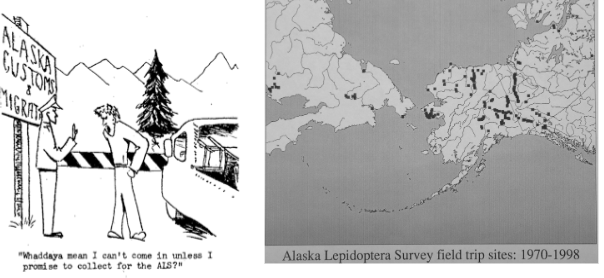
Figure 7 (right): ALS sites personally collected by KWP, map created in his own RangeMapper software program

2004 – 2014
During the last decade of Dr. Philip’s life, he focused his energy into live photography of butterflies and preservation of his database. Though every species was of interest, unprecedented swarms of Nymphalis j-album and Pontia occidentalis around Fairbanks were enthusiastically documented and collected. Dr. Philip co-authored his final paper with Vladimir Dubatolov, a review of the holarctic Arctia caja complex (Dubatolov & Philip, 2013) (Figure 8).
In 2004, he worked with the University of Alaska Museum to import his personal records into ARCTOS, a museum collection management database which shares its data to the Global Biodiversity Information Facility. Records for the ALS can now be publicly searched and downloaded at http://arctos.database.museum/kwp_ento Upon import, the sheer magnitude of the efforts of the ALS was finally visualized (Figure 9)
His live photography efforts took him across Alaska and western Canada in hopes of capturing images of every butterfly species for his long awaited Butterflies of Alaska field guide.
Dr. Philip’s passion for knowledge about butterflies and moths was matched only by his kindness in sharing what he knew with others. In 2011, he assisted K.M.Daly with identification of Lepidoptera photographed from around Toolik Field Station in northern Alaska. This was the start of a friendship which lasted until his sudden death on 14 March 2014.
He shall remain the epitome of inspiration to all who knew his magnificent contributions to science. Generations of future researchers will honor his incredible legacy as Alaska’s top Lepidopterist through use of his specimens and data.
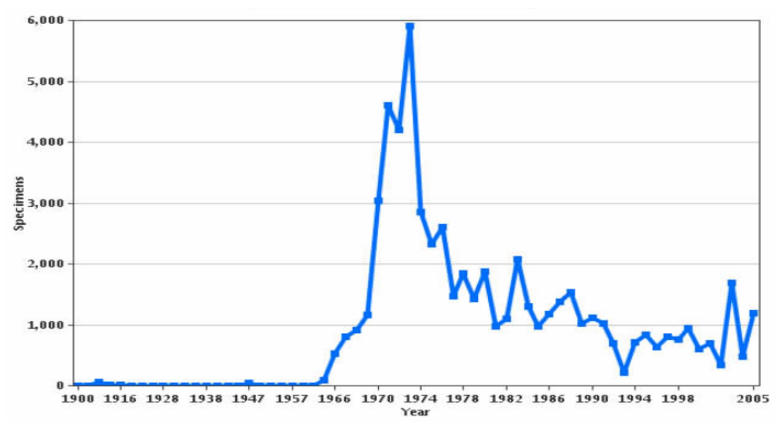
Continuation
After Dr. Philip’s death, the collection was moved from his private laboratory to UAM. The National Park Service recognized the immediate need for continued preservation of the collection and offered emergency funding for curation undertaken by K. M. Daly. The collection has now been inventoried and catalogued; a total of 111,837 specimens of Beringian Lepidoptera were counted along with an additional 16,000 ‘exotic’ specimens from around the world. All Alaska Lepidoptera Survey specimens will remain at the University of Alaska Museum until 2018, when the majority of the collection shall be transferred to the Smithsonian Institution.
All ALS databases were imported in 2015 to create detailed range maps for each species of Alaskan butterfly. Dr. Philip did not live to complete his proposed butterfly field guide; this project was undertaken by Dr. Clifford D. Ferris. Butterflies of Alaska, A Field Guide was first printed in December of 2015 (Philip & Ferris, 2015).
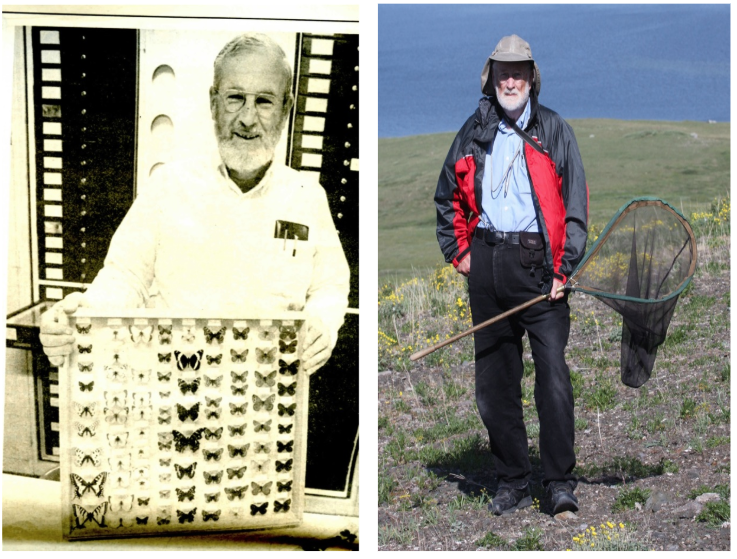
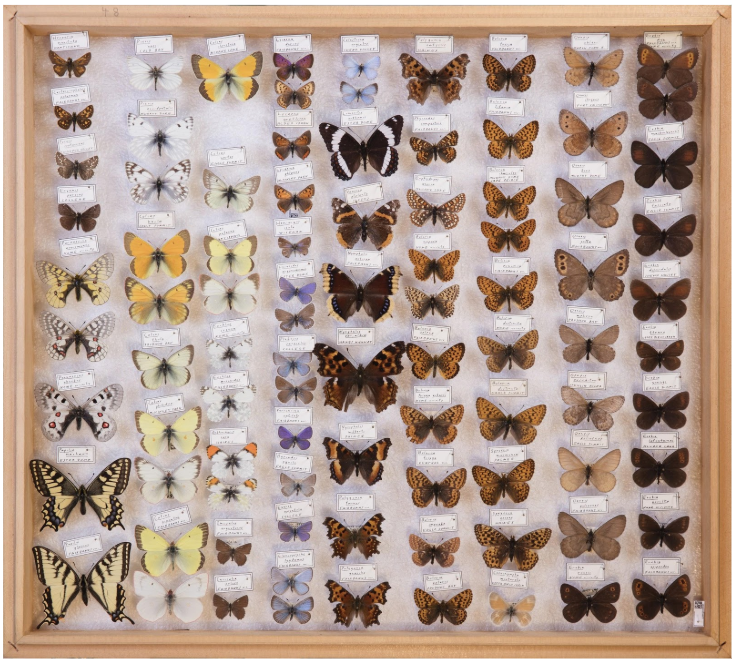
While the Alaska Lepidoptera Survey collection remains in its entirety at UAM, ongoing effort to curate and digitize specimens continues. Drawers and individual specimens are given scannable unobtrusive barcode tags (see bottom right Figure 10) which are associated with each digital specimen record. When scanned, the barcode reveals all associated collecting information along with the physical location of the specimen within the UAM storage range; this technology can allow for easy access for future researchers to visit and actively use the phenomenal resource of Dr. Kenelm W. Philip’s Lepidoptera Collection.
Acknowledgements
Thank you to the family of Dr. Philip, who created the Kenelm W. Philip Research Award in his honor. The dedicated work of the 600+ volunteers of the Alaska Lepidoptera Survey are acknowledged for their efforts to help Dr. Philip in his mission, which would have been impossible without the support of the Smithsonian Institute, National Park Service, National Geographic Society, Institute of Arctic Biology, and the University of Alaska Museum of the North.
Works Cited
Dubatolov, V.V. and Philip, K.W. (2013) Review of the northern Holarctic Arctia caja complex (Lepidoptera: Noctuidae: Arctiinae) The Canadian Entomologist, 145(2), pp. 147–154. doi: 10.4039/tce.2013.13.
Philip, K. W. (posthumous) & Ferris, C. D. (2015) Butterflies of Alaska, A Field Guide. Alaska Entomological Society, Fairbanks. vi+100 pp.
*All photos on this page (unless otherwise noted) were taken by Dr. Philip

